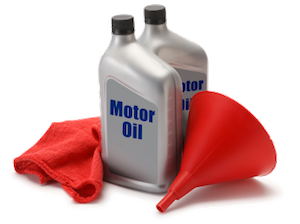home | e-mail | terms of use
oilspecifications.org
New Mercedes Heavy Duty Specifications
Introduction
The previous MB commercial vehicle guidelines are being updated and replaced.
New Requirements by Daimler Truck
Daimler Truck has introduced a new, independent set of requirements for engine oils and other lubricants used in its commercial vehicles. Going forward, these will be consolidated into a single document. This document will serve as the current reference for understanding these regulations. It will be regularly updated whenever there are changes to specifications or testing requirements within a specification.
DTFR Standards
Mercedes Benz Trucks advises that, for optimal functioning of engines and other components, operators should use only lubricants and fluids that comply with the new DTFR standards.
What is DTFR?
DTFR stands for Daimler Truck Fluid Release, which is derived from the initials of these words. The documentation under this name lists all the engine oil specifications of products approved by Daimler Trucks. As with the previous regulations, specifications for engine oils and other products approved for Mercedes-Benz-Trucks vehicles and engines can be found in the vehicle's operating manual and, where applicable, in additional service information.
Understanding DTFR Codes
Each digit in the DTFR code contains crucial technical information about the product. Therefore, each Mercedes Benz Trucks specification can be uniquely identified by its DTFR number. For precise identification, every DTFR number includes two numbers, a letter, and three additional numbers following the DTFR acronym, clearly indicating the basic characteristics of the corresponding lubricant.
Engine Oils and Gear Oils
For clarity, let's consider two categories:
- Engine Oils: The label for each engine oil starts with 15 following the DTFR acronym. A "B" follows if the vehicle, which the regulation applies to, is not equipped with a DPF unit, indicating a non-low ash engine oil category. Conversely, a "C" indicates low ash engine oil, used in vehicles equipped with a DPF unit. The next three digits accurately identify the product.
- Gear Oils: There are two basic types of gear oil labels. After the DTFR letters, 12 indicates “Axle” Oil, and 13 indicates gear oil. The following "B" denotes Gear Oil, while "C" indicates automatic transmission oil.
Technical Regulations
Technically, the new regulations do not introduce new requirements. Each new DTFR regulation corresponds to a previous MB XXX.XX type regulation.
Key Engine Oil Specifications
To aid understanding, the following list, not exhaustive, shows which new regulation replaces which old one:
- MB 228.3 - DTFR 15B110
- For high and medium-load diesel engines without after-treatment systems, typically up to EURO IV standard. Available in viscosity grades of 10W40, 15W40, 10S30, and 20W50.
- MB 228.31 - DTFR 15C100
- Low ash category for high and medium-load diesel engines with after-treatment systems. Available in viscosity grades of 10W40, 15W40, and 10W30.
- MB 228.5 - DTFR 15B120
- For high-performance diesel engines without after-treatment systems, but with a higher TBN number. Typically available in 10W40 viscosity grade.
- MB 228.51 - DTFR 15C110
- For high-performance diesel engines with after-treatment systems. Characterized by high cleanliness requirements and high wear protection. For EURO 6 vehicles in 5W30, 10W40, and 10W30 viscosity grades.
- MB 228.52 - DTFR 15C120
- For high-performance diesel engines with after-treatment systems in certain EURO VI Tier 4 equipped vehicles. Essentially corresponds to the DTFR 110 regulation, with the difference that in this category, the calcium level is limited. Available in 5W30, 10W40, and 10W30 viscosity grades.
- MB 228.61 - DTFR 15C130
- Low ash and low HTHS viscosity category for high and medium high-performance diesel engines with advanced after-treatment systems. Available in 5W-30 (HTHS: 2.9-3.2cP) viscosity grade.
- MB 228.71 - DTFR 15C140
- Low ash and particularly low HTHS viscosity (2.6-<2.9cP) engine oil category for engines in vehicles with advanced diesel after-treatment systems. Meets the most modern fuel-saving standards. Suitable for the latest OM471 Euro VI engines. Available in xW-20 HTHS: (2.6-<2.9cP) viscosity grade.
Gear Oil Specifications
Regarding gear oils, some examples are:
- MB 235.0 - DTFR 12B100
- MB 235.20 - DTFR 12B110
- MB 235.31 - DTFR 12B120
- MB 235.8 - DTFR 12B140
- MB 235.1 - DTFR 13B100
The technical specifications detail the allowed viscosity grades, ACEA or API performance levels, and the physical, chemical, and engine tests required during testing, including those developed by Daimler Truck. Apart from engine and gear oils, DTFR specifications also apply to hydraulic working fluids, brake fluids, coolants, greases, and power steering oils.
Background of DTFR Introduction
The newly formed Mercedes-Benz group has been split into two business units. One focuses on manufacturing passenger and small commercial vehicles, while Daimler Truck continues in the commercial vehicle sector. This separation aims to enable more flexible, rapid responses and stronger focus on each sector's unique market demands.
The introduction of DTFR and this administrative change does not affect the lubricant regulations for passenger cars and light trucks, as these are exclusively introduced within the Daimler Trucks framework under the Daimler Truck Fluid Release (DTFR) initiative.


